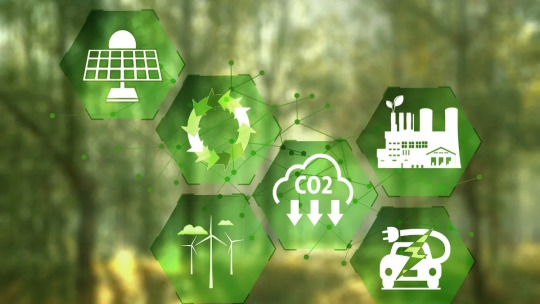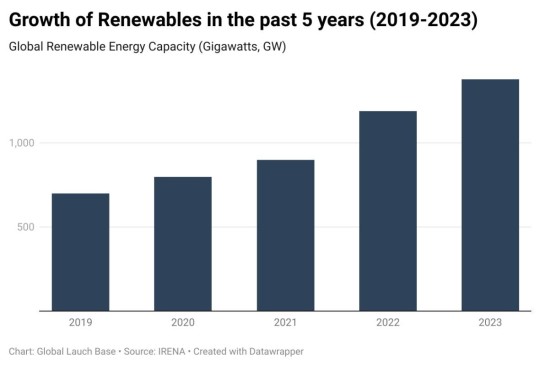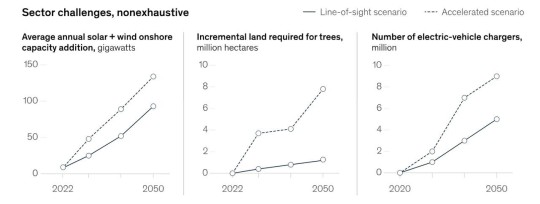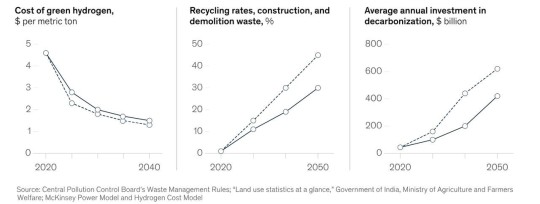#cleanenergy hashtag
Text

The Next Generation Energy Storage market size is projected to reach $40.5 billion in 2030 at a CAGR of 9.18% during the forecast period 2024-2030.
#NextGenEnergyStorage hashtag#EnergyStorage hashtag#BatteryTechnology hashtag#CleanEnergy hashtag#RenewableEnergy hashtag#EnergyTransition hashtag#Sustainability
0 notes
Text

MITS: Powering Your Future with Sustainable Energy😊
MITS is a leading provider of solar energy solutions, helping homes and businesses in Noida, Delhi, Patna, Begusarai, and Bihar Sharif transition to clean, affordable energy. Contact us today to learn more about how solar power can benefit you!😍
#solarpower hashtag#renewableenergy hashtag#solarenergyindia hashtag#noida hashtag#delhi hashtag#patna hashtag#begusarai hashtag#biharsharif hashtag#sustainability hashtag#cleanenergy hashtag#affordableenergy hashtag#solarpanel hashtag#solarpanelinstaller hashtag#renewable hashtag#explore hashtag#explorepage hashtag#trends hashtag#MITS#Activate to view larger image
1 note
·
View note
Text
Thank you for your kind words and for visiting our booth at the Solar Expo 2024. We are Avalon Technologies, a pioneer in clean energy and EMS solutions in India. We are proud to present our solar hybrid power systems and inverters, which combine the best of solar and grid power to deliver reliable and efficient energy for various applications.
Our vision is to “Your Vision, Our Expertise - Together we light up the world.” We believe that by collaborating with our customers, we can create a positive impact on the environment and society
For more details and insights into Avalon Technologies' participation and presentations at the expo, you can visit their website at Avalon Technologies.
https://www.avalontec.com/
#renewableenergy hashtag#solarpower hashtag#sustainabletech hashtag#cleanenergy hashtag#energysolutions hashtag#techexpo hashtag#solarinnovation hashtag#greentechnology#hashtag#ecofriendly hashtag#energytransition Avalon Technologies Limited Sienna Corporation Sienna ECAD Technologies Private Limited Srikanth T V
0 notes
Text

💡 Empowering Communities with Sustainable Utility Solutions 💡
At Xtreme Utility Consulting, we believe that every community deserves access to reliable and sustainable utility services. Our expert consulting services are designed to help cities and counties deliver top-notch utility solutions that not only meet today’s needs but also ensure a brighter, greener future for all.
Why Trust Xtreme Utility Consulting?
✅ Proven expertise in utility service optimization
✅ Commitment to promoting eco-friendly practices
✅ Tailored, cost-effective solutions for every community
Take the first step toward a sustainable future for your city. Partner with Xtreme Utility Consulting and let’s build a community that thrives!
Click here to learn more 👉 👉 https://lnkd.in/gJT8HpTc
#SustainableUtilities hashtag#GreenCommunity hashtag#EcoFriendlySolutions hashtag#UtilityConsulting hashtag#SmartCitySolutions hashtag#SustainableFuture hashtag#CommunityEmpowerment hashtag#EnvironmentalImpact hashtag#UtilityOptimization hashtag#GreenTech hashtag#FutureForward hashtag#EcoConsulting hashtag#CityPlanning hashtag#CleanEnergy
0 notes
Text

Bey Han Mühendislik olarak, yaşadığımız dünyayı, çok daha güzel bir yer haline getirebileceğimize dair inancımız tam ve bütün çalışmalarımız bu vizyonumuza hizmet ediyor. Gelecek kuşaklara, daha sürdürülebilir, yaşam kalitesi yüksek bir dünyayı miras bırakmak için bütün gücümüzle çalışıyoruz.
As Bey Han Engineering, we have full faith that we can make the world we live in a much more beautiful place, and all our work serves this vision. We are working with all our strength to leave a more sustainable world with a higher quality of life to future generations.
hashtag#future
hashtag#sustainable
hashtag#nextgen
hashtag#nextgenerations
hashtag#cleanenergy
hashtag#solarpower
hashtag#beyhan
hashtag#engineering
hashtag#turkey
hashtag#balkans
hashtag#bosniaiherzegovina
hashtag#serbia
hashtag#work
hashtag#labor
hashtag#gelecek
hashtag#vizyon
hashtag#sürdürülebilirlik
hashtag#güneş
hashtag#temizenerji
hashtag#mühendislik
hashtag#kurulum
www.bey-han.com
#Bey Han Mühendislik olarak#yaşadığımız dünyayı#çok daha güzel bir yer haline getirebileceğimize dair inancımız tam ve bütün çalışmalarımız bu vizyonumuza hizmet ediyor. Gelecek kuşaklara#daha sürdürülebilir#yaşam kalitesi yüksek bir dünyayı miras bırakmak için bütün gücümüzle çalışıyoruz.#As Bey Han Engineering#we have full faith that we can make the world we live in a much more beautiful place#and all our work serves this vision. We are working with all our strength to leave a more sustainable world with a higher quality of life t#hashtag#future#sustainable#nextgen#nextgenerations#cleanenergy#solarpower#beyhan#engineering#turkey#balkans#bosniaiherzegovina#serbia#work#labor#gelecek#vizyon#sürdürülebilirlik#güneş#temizenerji#mühendislik#kurulum
0 notes
Text
#AxialFluxMotors#ElectricVehicles#EVs hashtag#SustainableTransport#GreenTechnology#RenewableEnergy#MotorTechnology#Innovation#CleanEnergy#FutureMobility
0 notes
Text
The Role of Renewables in Decarbonisation
Written By: Jagriti Shahi

Introduction:
As the world grapples with the urgent need to mitigate climate change, the imperative for decarbonization has become increasingly apparent. At the forefront of this global effort are renewable energy sources, which play a pivotal role in reducing greenhouse gas emissions and transitioning towards a sustainable energy future. In this article, we delve into the multifaceted role of renewables in decarbonization, exploring their benefits, challenges, and the path forward.


Figure: An overview and possible decarbonisation pathways for India - Source: Mckinsey & Company
The Rise of Renewables:
Renewable energy sources, such as solar, wind, hydro, and biomass, have witnessed remarkable growth and technological advancements in recent years. This surge can be attributed to several factors, including declining costs, policy support, and heightened environmental awareness. Notably, renewables have emerged as competitive alternatives to fossil fuels, offering cleaner, more sustainable energy solutions.
Decarbonization Imperative:
Decarbonization, the process of reducing carbon dioxide and other greenhouse gas emissions, is crucial for mitigating climate change and achieving global climate targets, such as those outlined in the Paris Agreement. The energy sector, being a significant contributor to greenhouse gas emissions, holds immense potential for decarbonization through the adoption of renewable energy technologies.
The Role of Renewables:

Figure: Growth of Renewables in the past 5 years
Renewable energy sources play a multifaceted role in decarbonization across various sectors:
Power Generation: Renewables are instrumental in decarbonizing electricity generation, displacing carbon-intensive sources like coal and natural gas. The scalability and versatility of renewables enable the deployment of clean energy infrastructure on a global scale, driving the transition towards low-carbon electricity grids.
Transportation: The electrification of transportation, facilitated by renewable energy, is pivotal for reducing emissions from the transport sector. Electric vehicles (EVs) powered by renewable electricity offer a sustainable alternative to conventional internal combustion engine vehicles, thereby curbing emissions and improving air quality.
Heating and Cooling: Renewable energy technologies, such as solar thermal and geothermal systems, hold promise for decarbonizing heating and cooling in buildings and industrial processes. By harnessing renewable heat sources, it is possible to reduce reliance on fossil fuels for heating purposes, contributing to overall emissions reduction.
Industry and Agriculture: Renewable energy integration in industrial processes and agriculture can mitigate emissions associated with manufacturing, processing, and agricultural activities. From solar-powered factories to bioenergy production from agricultural waste, renewables offer innovative solutions for decarbonizing these sectors.
Renewables in Low Carbon Construction:

Figure: Primary Energy Mix,% Source: Mckinsey & Company
Low carbon construction encompasses practices and technologies aimed at minimizing carbon emissions associated with building materials, construction processes, and building operation. Renewable energy plays a crucial role in this context through several avenues:
Renewable Energy Integration: Incorporating renewable energy systems, such as solar panels and wind turbines, into building designs reduces reliance on carbon-intensive grid electricity for powering homes and commercial buildings. Additionally, utilizing renewable energy for heating and cooling purposes in buildings mitigates emissions associated with traditional heating fuels like natural gas.
Sustainable Materials: Renewable resources can be utilized to produce sustainable building materials, such as bamboo, timber, and recycled materials. These materials not only have lower embodied carbon compared to traditional counterparts but also contribute to biodiversity conservation and sustainable land management.
Energy Efficiency: Renewable energy complements energy-efficient building design and technologies, enhancing overall energy performance and reducing operational carbon emissions. Integrating renewables with energy-efficient measures, such as insulation, efficient lighting, and smart building controls, maximizes energy savings and minimizes environmental impact.
Carbon Capture, Use & Storage (CCUS):
CCUS technologies are instrumental in capturing carbon dioxide emissions from industrial processes and power generation facilities, preventing their release into the atmosphere. The captured CO2 can then be utilized in various applications or stored underground, effectively reducing net emissions. Renewables play a vital role in CCUS through the following mechanisms:
Powering CCUS Facilities: Renewable energy sources provide low-carbon electricity to power CCUS facilities, reducing the carbon footprint of the capture and storage process. By utilizing renewable electricity instead of fossil fuels, CCUS operations can achieve significant emissions reductions while ensuring sustainable operation.
Renewable Hydrogen Production: Renewable energy, particularly solar and wind power, can be utilized to produce renewable hydrogen through electrolysis. This renewable hydrogen serves as a clean energy carrier for industrial processes and transportation, enabling decarbonization in sectors where direct electrification may be challenging.
Carbon Utilization: Renewable energy can facilitate carbon utilization technologies, where captured CO2 is converted into valuable products such as synthetic fuels, chemicals, and building materials. By coupling CCUS with renewable energy-driven conversion processes, carbon emissions are not only mitigated but also utilized in a circular and sustainable manner.
Challenges and Opportunities:
While the integration of renewables with low carbon construction and CCUS offers significant potential for decarbonization, several challenges must be addressed. These include technological limitations, cost competitiveness, policy frameworks, and public acceptance. Overcoming these challenges requires collaborative efforts from governments, industry stakeholders, and research institutions to drive innovation, scale deployment, and create supportive regulatory environments.


Figure: Sector Challenges, Source: Mckinsey & Company
The Path Forward:
To harness the synergies between renewables, low carbon construction, and CCUS effectively, concerted action is needed at the global, national, and local levels. This includes:
Setting ambitious decarbonization targets and policies that incentivize the adoption of renewables, promote low carbon construction practices, and support CCUS deployment.
Investing in research, development, and innovation to advance renewable energy technologies, low carbon materials, and CCUS solutions.
Fostering collaboration among governments, businesses, and communities to accelerate the transition to a low-carbon economy and achieve net-zero emissions.
Conclusion:
Renewable energy, coupled with innovative approaches such as low carbon construction and CCUS, holds immense promise in driving decarbonization across multiple sectors. By leveraging the synergies between these strategies, we can mitigate carbon emissions, enhance resilience to climate change, and pave the way for a sustainable future. Now is the time to embrace renewables as catalysts for transformative change and forge a path towards a low-carbon society.
#Renewables hashtag#Decarbonisation hashtag#SustainableEnergy hashtag#CleanEnergy#hashtag#RenewableEnergySources hashtag#SolarPower hashtag#WindEnergy hashtag#ClimateAction#GreenEnergy hashtag#CarbonReduction hashtag#EnergyTransition hashtag#EnvironmentalSustainability hashtag#RenewablePowerGeneration#LowCarbonFuture hashtag#EnergyInnovation
0 notes
Text
"Powering Progress: Unleashing the Potential of Microturbines ⚡️"
Microturbines represent a revolution in decentralized power generation, offering compact, efficient, and versatile solutions for a wide range of applications.
These small-scale turbines harness the power of combustion to generate electricity, providing a reliable source of energy for residential, commercial, and industrial settings alike. With hashtags like #Microturbines, #DecentralizedEnergy, #RenewableEnergy, #EnergyEfficiency, #CleanEnergy, #SustainablePower, #GreenTechnology, #OffGridPower, #ResilientInfrastructure, #MicrogridSystems, #EnergyInnovation, #EnergyIndependence, #EcoFriendlyTech, #SmartGrid, and #PowerGeneration, the ongoing conversation surrounding microturbines underscores their importance in driving progress towards a more sustainable and resilient energy future. As the world seeks to reduce carbon emissions and transition towards cleaner energy sources, microturbines offer a scalable and flexible solution that can be deployed in a variety of settings. Through continued research and innovation, microturbines have the potential to play a significant role in shaping the future of energy, empowering communities to take control of their energy needs and build a more sustainable world. 💡🌍
0 notes
Video
youtube
Battery Storage: Fueling the Green Revolution!
Unlocking the Power of Clean Energy
🔋🌱 The world is at a pivotal moment in the fight against climate change. As we strive for a sustainable future, one technology stands out as a game-changer: battery storage. Let’s delve into why it’s not just a buzzword but a critical force driving the green revolution.
The Motivational Hook: Empowering Change
Imagine a world where renewable energy flows seamlessly, even when the sun sets or the wind calms. Picture a grid resilient to extreme weather events, providing uninterrupted power to homes, businesses, and communities. Battery storage makes this vision a reality.
Salient Facts and Statistics: The Power of Batteries
Explosive Growth: U.S. battery storage capacity skyrocketed from 47 MW in 2010 to a staggering 11,071 MW in 20231. That’s a leap toward a cleaner, more reliable energy system.
Cost Revolution: Lithium-ion battery pack prices plummeted by 88% from over $1,300/kWh in 2010 to just $151/kWh in 20211. Affordable storage is reshaping the energy landscape.
Future Forecast: Large-scale battery storage is projected to reach a whopping 80 GW by 20301. It’s not just a trend; it’s our energy future.
The Triple Bottom Line: Social, Economic, and Environmental Impact
Social: Battery storage ensures uninterrupted power during outages, protecting businesses and livelihoods. It’s a lifeline for hospitals, schools, and emergency services.
Economic: By storing energy during off-peak hours and releasing it during high demand, storage reduces costs for consumers and businesses alike.
Environmental: Batteries enable us to harness solar and wind energy 24/7, reducing reliance on fossil fuels and curbing emissions.
Subscribe, Watch, Engage!
Join the sustainable revolution! Subscribe to Sustainable Investing Digest, watch our videos, and share your insights. Together, we’ll shape a greener, more resilient world. 🌱🔋
Hashtags: #CleanEnergy #BatteryStorage #GreenRevolution #Sustainability
0 notes
Text
CleanSpark Expands Bitcoin Mining Operations to Mississippi with $19.8 Million Acquisition

In a recent announcement, CleanSpark, a clean Bitcoin mining and energy company, revealed its plan to expand operations to Mississippi. The company acquired an 85 MW natural gas-fired power plant in the region for approximately $19.8 million. This acquisition will help CleanSpark become one of the largest self-sufficient energy and Bitcoin mining operations in the US.
The purchase of this power plant allows CleanSpark to secure cheap and reliable power that will fuel its Bitcoin mining operations. By operating its own power plant, the company reduces its dependence on the local grid and can often generate energy at a lower cost. This increased control over energy costs makes CleanSpark more resilient to fluctuations in energy prices, which is beneficial for the profitability of its mining operations.
"Our move into Mississippi is an important step towards securing access to reliable power sources that can help reduce costs and improve our mining operations' sustainability," said Zach Bradford, CEO of CleanSpark. "We believe that expanding our presence in this region will position CleanSpark for long-term growth in the Bitcoin mining industry."
This expansion to Mississippi is part of CleanSpark's strategic plan to establish itself as a major player in the Bitcoin mining industry. The company aims to maximize profitability and minimize its ecological footprint through the utilization of renewable energy and advanced energy management technologies.
Read the original article
Related Hashtags:
Bitcoin, CleanEnergy
0 notes
Photo

🔥🚀🌞 Elon Musk is changing the game with a new Master Plan for a sustainable energy future, focusing on solar power and renewable energy sources.🌿🔋💡 Although there are no new cars in the plan, Musk is paving the way for a greener tomorrow.🌎 Are you ready to join the movement? Share your thoughts in the comments below! 💬 #ElonMusk #MasterPlan #SustainableEnergy #SolarPower #RenewableEnergy #GreenFuture #Innovation #Technology #ElectricVehicles #ClimateChange #CleanEnergy #Tesla #SpaceX #SolarCity #EmojisInTheAir Hashtags: #ElonMusk #MasterPlan #SustainableEnergy #SolarPower #RenewableEnergy #GreenFuture #Innovation #Technology #ElectricVehicles #ClimateChange #CleanEnergy #Tesla #SpaceX #SolarCity #EnergyTransition #EnergyEfficiency #CarbonFootprint #SolarPanels #WindEnergy #HydrogenFuelCells #Environmentalism #EcoFriendly #GreenLiving #FutureTech #CleanTech #EmbraceChange #PositiveEnergy #EmojisInTheAir https://www.instagram.com/p/CpT0i9QKc-K/?igshid=NGJjMDIxMWI=
#elonmusk#masterplan#sustainableenergy#solarpower#renewableenergy#greenfuture#innovation#technology#electricvehicles#climatechange#cleanenergy#tesla#spacex#solarcity#emojisintheair#energytransition#energyefficiency#carbonfootprint#solarpanels#windenergy#hydrogenfuelcells#environmentalism#ecofriendly#greenliving#futuretech#cleantech#embracechange#positiveenergy
1 note
·
View note
Text

Solar PV Operations and Maintenance Market
The solar PV operations and maintenance market size is forecast to reach USD 10.9 billion by 2030, after growing at a CAGR of 14.8% during 2024-2030.
#hashtag#Sustainability hashtag#GreenTech hashtag#CleanEnergy hashtag#IoT hashtag#AI hashtag#DigitalTransformation hashtag#EnergyEfficiency hashtag#GridStability hashtag#SolarPower hashtag#TechInnovation hashtag#Renewables
0 notes
Text
HYDROPOWER DAMS & SUSTAINABLE ALTERNATIVES
We all are well aware of the versatility of the Hydropower dams that benefit the communities in a variety of ways. Hydropower and pumped-storage continue to play an important role in the battle against climate change, providing vital power, storage and flexibility. Though Hydropower does not pollute the air or the water supply, the Hydropower facilities, on the other hand, can have significant environmental consequences by altering the environment and impacting land use, housing and natural ecosystems in the dam region.
A dam and a reservoir are common features of hydroelectric power projects. The graph below shows the distribution of dams in both the hemispheres and how vastly it is threatening the species within its region. These constructions block fish movement and impact the fish populations. The temperature of the water and the flow of the river also gets affected by the operation of a hydroelectric power plant and moreover the native flora and animals in the river and on land get harmed as a result of these changes.

Figure: Globalscale dams impact on freshwater megafauna
(Source: Future large hydropower dams impact global freshwater megafauna, Scientific Reports, 2019)
Furthermore, the people's houses, valuable natural regions, agricultural land, and archaeological sites may be covered by reservoirs. As a result, dam construction may necessitate the relocation of people. Methane, a powerful greenhouse gas, may also develop and be released into the atmosphere in some reservoirs.
Now when we come to India, it is the fifth-largest country in terms of installed hydroelectric power capacity in the world. India's installed utility-scale hydroelectric capacity was 46,000 MW as of March 31, 2020, accounting for 12.3% of the country's total utility power production capacity. A total of 4,683 MW (1.3 % of the total utility power generating capacity) of smaller hydroelectric power units have been constructed. At a 60% load factor, India's hydroelectric power potential is projected to be 148,700 MW. In the fiscal year 2019–20, India generated 156 TWh of hydroelectric electricity (excluding small hydro) with an average capacity factor of 38.71%.
The following table shows the basin wise hydroelectric power potential of the Indian river system as suggested by the Central Electricity Authority (CEA).

Examples of environmental issues related to hydropower electricity projects in India:
1. Uttarakhand
The flood and catastrophe vulnerability of Uttarakhand and the Himalayas has risen as a result of the building and operation of dams and hydroelectric projects. The hazards are being multiplied by the growing frequency of heavy and strong rainfall events, glacier melting, glofs and moraine left behind by retreating glaciers, the intrinsic fragility of the mountains, blasting and tunnelling and deforestation.
2. Kerala
According to Reuters, Kerala's two largest reservoirs, Idukki and Idamalayar, have been functioning for years without emergency action plans (EAPs), which are a necessity for major dams throughout the world. The reservoirs also lack "rule curves," a crucial safety guideline that specifies the maximum amount of water that may be safely kept behind a dam at any one time based on seasonal conditions. The banks of the Periyar River, which makes its way to the shore, are dotted with dozens of cities and villages. The path of the river downstream has changed and communities have encroached along its banks over the years since the gates on the gigantic Idukki dam have not been opened for 26 years. As a result, victims and officials had no idea where water levels might increase in the case of a disaster.
3. Northeast India
The Tipaimukh High Dam (THD) on the Manipur-Mizoram border was built to retain floodwaters in the lower Barak valley, but it was later upgraded to include a hydroelectric component. The THD case highlights concerns of relocation and loss of livelihoods, particularly for a large number of indigenous populations, mostly belonging to the Zeliangrong and Hmar peoples. The dilemma is also transboundary since the people of Bangladesh are concerned about probable changes in the flow pattern downstream of the dam following the THD's construction.
Alternatives/ Solutions and the startups encouraging them:
1. Biomass gasifiers: Generates power by burning waste materials from agriculture (such as rice or maize husks).
Agilyx
Frontline BioEnergy
Renew One
Rays Enserv
2. Micro-hydro (100 kW) and pico-hydro (5 kW) systems are small-scale hydroelectric systems that do not require a dam and run on the river's natural flow.
Hace
Turbulent
BladeRunner Energy
Big Moon
3. Solar and wind power
MYSUN
WePower
Oxford PV
RAPTOR Maps
New World Wind
SAPHON Energy
Sea Twirl
Vawt
4. Co-generation is a system that generates electricity, heat, and cool from waste heat and is generally located near a consumer's demands. Low voltage systems can be used to share/sell the surplus to neighbouring consumers.
Naoden
SunOyster
Dandelion
Enviro Power
Conclusion:
When looked at the other factors which imply the disadvantages behind hydropower dams in India include our inability to provide proper forecasts, use available forecasts, and have a functioning disaster management mechanism, as well as our dismal track record in conducting any credible environmental-social impact assessments. Moreover, lack of public consultations, poor appraisals, and a lack of capacity to monitor or achieve compliance.
On the other hand every year, dozens of such dams are decommissioned at a faster rate in developed nations like the US and Europe owing to the deemed hazardous and non-economic problems related to it. However, it is concerning that developing countries like India are not being able to recognise the unsustainable character of these programmes and still new hydropower projects are coming up. It is true that in three monsoon months, Indian Rivers transport more than two-thirds of their yearly flow. We are wasting a vast amount of water that is always flowing and may be transformed to electricity. Thus these questions are also certain to think about: can we afford to waste the majority of water's energy by allowing it to trickle down the drain unutilized during the rainy season? Dams and reservoirs on the other hand are built to endure a hundred years or more and what other form of energy has such a lengthy lifespan? They give us low-cost energy no doubt but it also comes with irreparable damage to major rivers and ecology.
Therefore, for the country's development and prosperity, it is necessary to expand and shift reliance on hydropower. This is important for the long-term water resource development to assure the continued supply of water for hydropower generating and other operations, as well as flood mitigation for downstream residents. Hence, we need to look for sustainable and environmentally-friendly solutions to our increasing demands for water and electricity for various purposes.
About Global Launch Base:
The Indian Agri-Tech industry is expected to grow exponentially to over $30 Billion by 2025. Global Launch Base specializes in bringing high tech innovation for Agri-Tech and Conservation into the Indian Market.
Our expertise includes working with high tech European Agri-Tech companies and working with the local farmers and actually managing our own farms!. We look forward to helping you navigate the vastly different but vibrant Indian Agricultural markets.
Agri-Tech Innovations
Forest/ Wildlife Conservation
Food Waste Reduction
Written by: Gargi Sarma
Key Contributors: Anubha Chicki and Kiran Gange
#startups hashtag#energy hashtag#sustainable hashtag#environment hashtag#solar hashtag#windpower hashtag#biomass hashtag#microhydroelectric hashtag#cleanenergy hashtag#cleanenergytechnologies hashtag#cleanfuture hashtag#gogreen hashtag#watermanagement hashtag#climatechangeisreal#advertising#business#marketing#entrepreneur#finance
1 note
·
View note
Photo

The new year is already 10.5 hours old and we are now at the dawn of new race. Here at the starting line it is time to move forward. Lets start with more activism against animal cruelty. Lets start with promoting Veganism. Lets start with making this world a better and a cleaner place to live on. I hope you will join me and all the others by starting today. Share your efforts with me and the rest of the world. Small things count too. Even the biggest ship on earth is constructed from a lot of smaller parts before it became the huge object that floats on water. Make it a good 2019 for all of us even for those who have no voice. Hope to see your efforts here on social media. #newstart #10am #veganistisch #vegan #motherearth #road #literati #clean #activism #sport #voiceless #thunder #marvel #hashtag #cleanenergy #freshmind #plants #rainforest #f1 #soocer #actor #politics #ships #float https://www.instagram.com/p/BsFkD3OFSXO/?utm_source=ig_tumblr_share&igshid=m6iqqji1r7zl
#newstart#10am#veganistisch#vegan#motherearth#road#literati#clean#activism#sport#voiceless#thunder#marvel#hashtag#cleanenergy#freshmind#plants#rainforest#f1#soocer#actor#politics#ships#float
0 notes
Photo

Best solar energy training online. #solarenergy hashtag#renewableenergysystems hashtag#solarpv hashtag#solar hashtag#renewable hashtag#solarpanels hashtag#solarpower hashtag#solarpanel hashtag#renewablenergy hashtag#renewablepower hashtag#solarprojects hashtag#windpower hashtag#pv hashtag#solarproject hashtag#windenergy hashtag#investmentstrategies hashtag#sustainableenergy hashtag#cleanenergy hashtag#energy hashtag#cleanpower hashtag#investmentmanagement hashtag#alternativeenergy hashtag#portfoliomanagement hashtag#assetmanagement hashtag#energyindustry hashtag#renewableenergies hashtag#windfarms hashtag#cleanenergyfuture hashtag#windturbines https://www.instagram.com/p/CAE-DRqlsjB/?igshid=uqg8tjg9vn4b
#solarenergy#renewableenergysystems#solarpv#solar#renewable#solarpanels#solarpower#solarpanel#renewablenergy#renewablepower#solarprojects#windpower#pv#solarproject#windenergy#investmentstrategies#sustainableenergy#cleanenergy#energy#cleanpower#investmentmanagement#alternativeenergy#portfoliomanagement#assetmanagement#energyindustry#renewableenergies#windfarms#cleanenergyfuture#windturbines
0 notes
Photo

ABACUS SOLAR. Renewable Energy For Smart Living. *clean,simple,reliable. hashtag#abacussolar hashtag#solarsolution hashtag#solarpanel hashtag#solarMelbourne hashtag#renewableenergy hashtag#solarenergy hashtag#solarpower hashtag#solar hashtag#renewables hashtag#cleanenergy
0 notes